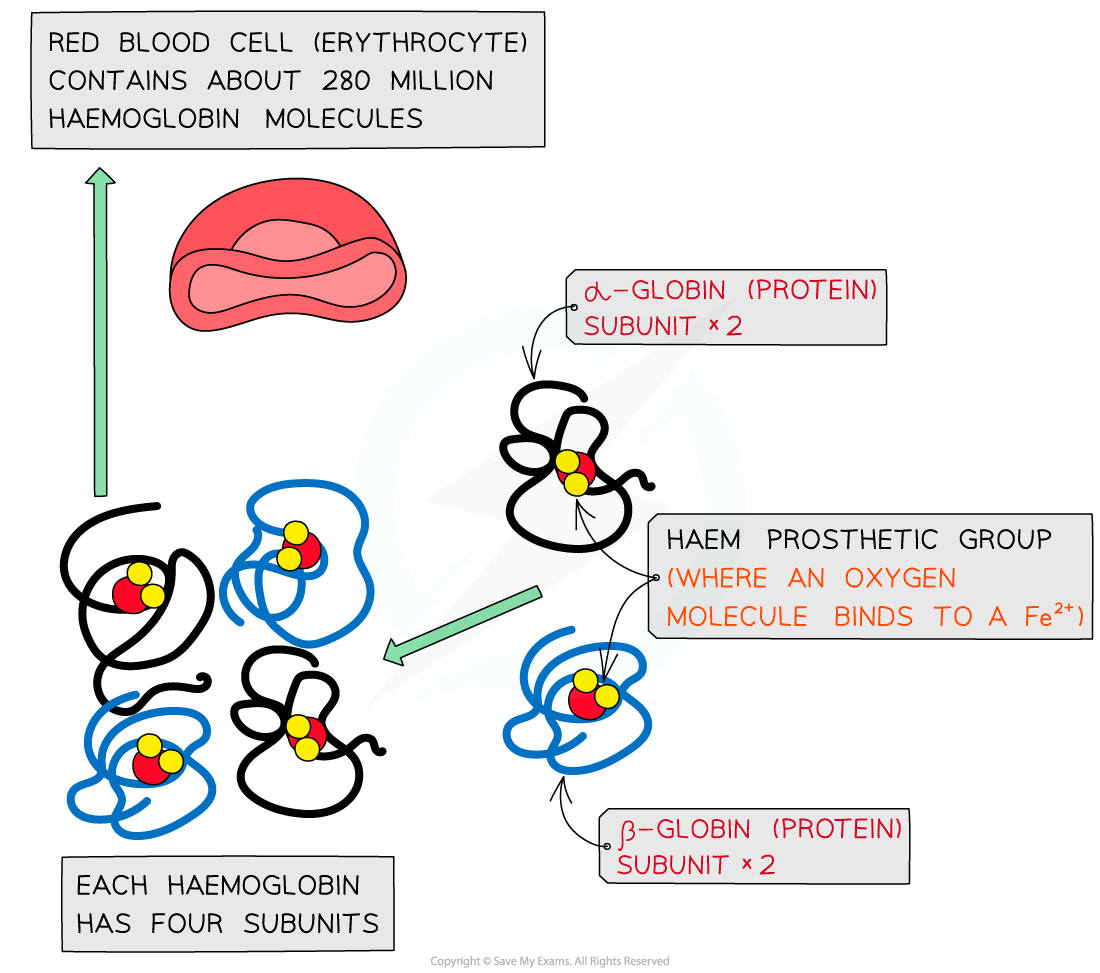Red Blood Cells, Haemoglobin & Oxygen (Cambridge (CIE) AS Biology) : Revision Note
Red Blood Cells, Haemoglobin & Oxygen
The majority of oxygen transported around the body is bound to the protein haemoglobin in red blood cells
Red blood cells are also known as erythrocytes
Each molecule of haemoglobin contains four haem groups, each able to bond with one molecule of oxygen
This means that each molecule of haemoglobin can carry four oxygen molecules, or eight oxygen atoms in total
Haemoglobin structure diagram

Haemoglobin proteins are made up of four subunits, each of which contains a region called a haem group to which oxygen can bind
When oxygen binds to haemoglobin, oxyhaemoglobin is formed
Oxygen + Haemoglobin Oxyhaemoglobin
4O2 + Hb Hb4O 2
The binding of the first oxygen molecule results in a conformational change in the structure of the haemoglobin molecule, making it easier for each successive oxygen molecule to bind; this is cooperative binding
The reverse of this process happens when oxygen dissociates in the tissues
Worked Example
There is around 150 g of haemoglobin in 1 dm3 of blood. In a healthy adult at room temperature, 1 g of haemoglobin can combine with 1.3 cm3 of oxygen.
Calculate how much oxygen can be carried in 1 dm3 of blood.
To answer this question, we must look at the information already given to us in the question. You do not need prior knowledge to gain full marks here.
In 1 dm3 of blood, there is 150 g of haemoglobin
1 g of haemoglobin can carry 1.3 cm3 of oxygen
1.3 x 150 = 195
Therefore 150 g of haemoglobin can carry 195 cm3 of oxygen
195 cm3 is the final answer
Examiner Tips and Tricks
In mathematical questions, remember that 1000 cm3 equals 1 dm3

You've read 0 of your 5 free revision notes this week
Sign up now. It’s free!
Did this page help you?
